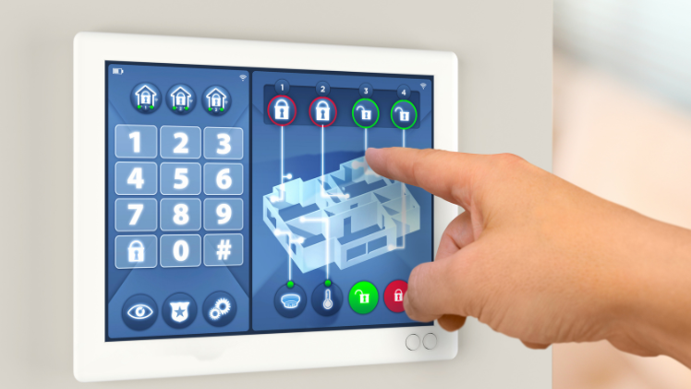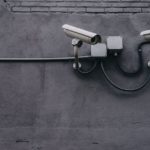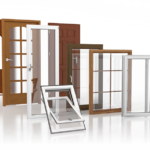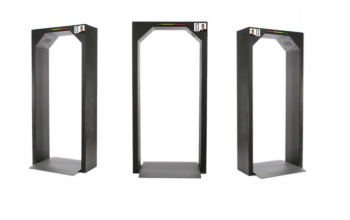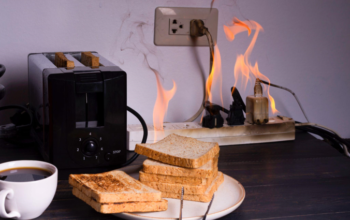Home safety and technology are two concepts that have become intertwined in our modern world. Do you comprehend it sufficiently? Navigating the realm of home security can be daunting. Making the right choice of home security system can be tricky, but it’s essential to ensure your property is adequately protected.
But here’s the truth…If you’re not leveraging home safety and technology, your property might not be as secure as you think.
This doesn’t mean every household needs an elaborate setup with all the bells and whistles. But understanding what’s out there – from smart locks to surveillance cameras – is key to informed decision-making.
Understanding Smart Home Security Systems
The rise of smart home security systems is a testament to the increasing demand for enhanced safety in today’s homes. The combination of comfort and assurance that these systems bring has made them an essential part of contemporary life.
What is a smart home security system?
A smart home security system, at its core, functions as an interconnected network designed to safeguard your residence from potential threats such as burglaries or fires. It employs various components like alarms, sensors, cameras, and control panels that work cohesively to ensure comprehensive protection.
This new breed of alarm-based solutions represents significant progress over traditional setups, which merely sounded off loud alerts when intrusions were detected. Today’s advanced technology allows real-time notifications directly on your smartphone while also offering remote control capabilities via dedicated apps – truly transforming how we approach our broader safety concerns within our home-safe device support ecosystem.
Key components of a smart home security system
An intelligent solution catering to the current demands in the evolving intelligent home security market needs several key elements, for it not only covers basic protective measures but goes beyond addressing a wider range of consumer preferences toward creating genuinely ‘intelligent’ households. Here are some fundamental pieces:
- Sensors: Devices like motion sensors installed around front doors/windows serve as critical tech upgrades, triggering alarms upon detecting unexpected movements/openings thereby keeping families safe.
- Cameras: Surveillance cameras provide visual monitoring both inside and outside properties, allowing users to track activities round-the-clock with certain models even supporting night vision features, ensuring effective surveillance regardless of the time of day or night.
- Panic Buttons: In emergencies where immediate assistance is required, panic buttons help by sending out distress signals instantly without needing to manually dial emergency services numbers.
This integration with existing smart devices expands their utility scope far beyond just basic protection measures.
The Role of Smart Locks and Doorbells in Home Safety
As we continue to embrace the convenience brought by smart home technologies, it’s crucial to understand how devices like smart locks and doorbells contribute significantly to a comprehensive home safety solution.

Features and Benefits of Smart Locks
Smart locks, an integral part of any intelligent home security market, offer more than just locking mechanisms. They provide homeowners with remote control capabilities using Wi-Fi-enabled devices that enhance both convenience and overall home safety.
In essence, they act proactively against break-ins before they occur, providing peace of mind for family-safe environments at all times.
How Do Smart Doorbells Improve Home Safety?
Smart doorbell, a critical tech upgrade within home safe device support networks, provides front door security around-the-clock through real-time video feeds directly on your smartphone or tablet, regardless of where you might be located globally.

- Beyond merely capturing footage when someone rings the bell, most models include advanced features like facial recognition software. (45% of consumers today prefer this feature.)
- Night vision capability is also included among the top preferred attributes. (38% of users consider this important)
- An essential component includes two-way audio communication plus motion detection alerts, which trigger immediate notifications even if intruders bypass ringing altogether yet still venture near the entrance area (33% of buyers value this function).
Surveillance Cameras and Monitoring Systems for Home Security
The role of surveillance cameras in the realm of home security is colossal. These devices work tirelessly, providing homeowners with real-time footage and alerts to any potential threats.
Types and uses of surveillance cameras for residential use
A broad selection of surveillance cameras is available to suit any requirement.
- Indoor Cameras: Designed as an extra pair of eyes inside the home, they help monitor indoor activities, from children playing to pets’ movements.
- Outdoor Cameras: Ensuring safety for outdoor spaces such as driveways and gardens, these cameras are typically weather-resistant with many featuring night vision for clear visuals in low light.
- Wired Systems: Delivering consistent and reliable surveillance, these systems often need a professional installation due to their complex wiring but assure steady connections.
- Wireless Systems: Known for their installation flexibility and convenience, they can typically be set up by homeowners themselves, though they might occasionally face connectivity hitches.
Importance and functionality monitoring systems
Moving beyond standalone camera units working independently, modern-day home security truly shines through integrated intelligent networks, which tie together all existing smart devices into one unified platform, including alarm system components like motion sensors, etc. This allows users to remotely control the entire setup via smartphones and computers, offering peace of mind above all else.
A prominent feature of many advanced monitoring solutions is automated alerts that notify homeowners instantly when unusual activity is detected anywhere on the premises, thereby enabling a quick response time against potential intruders. Furthermore, some providers offer round-the-clock professional remote supervision services, adding another layer of protection beyond DIY efforts alone.
DIY vs Professional Installation – Choosing Your Best Option
Deciding between DIY and professional installation of home security systems can be daunting, yet it’s easy to comprehend when you contemplate the advantages/disadvantages of each. So let’s delve into these two options.
Advantages/disadvantages DIY Security Systems
A major perk of DIY security systems is their cost-effectiveness. You avoid paying for labor by setting up everything yourself. Plus, many smart devices today are designed with user-friendly setup procedures in mind.
But there’s a flip side: potential errors during self-installation could compromise your family’s safety. Also, without expert guidance, you might miss out on integrating existing smart devices properly or fail to consider critical tech upgrades that enhance overall performance.
Pros/cons of professionally installed solutions
Moving onto professionally installed solutions brings peace of mind as an experienced technician ensures optimal functionality from day one – no guesswork involved.
Pros:
- Peace of Mind: Experienced technicians ensure that the system works optimally from day one, eliminating any guesswork for homeowners.
- Integration: Professionals can seamlessly integrate the system with other home safety elements like fire alarms, due to their comprehensive knowledge of various products.
Cons:
- Higher Upfront Costs: The initial expense can be steep because of the labor charges associated with professional installation.
- Potential Ongoing Costs: Some companies might charge monthly monitoring fees, which can add up over time.
- Less Flexibility: Changing or updating the system might require another visit from a professional, unlike DIY systems which homeowners can tweak on their own.
Considerations: When weighing the benefits and drawbacks of professional installations:
- Think not just of the initial investment but also the potential ongoing expenses.
- Take into account personal comfort levels with technology and any budget constraints.
- Stay informed about developments in the home security market to make the best long-term decisions for your home’s safety.
Potential Vulnerabilities in Smart Home Networks
Smart home networks, despite their impressive convenience and efficiency, are not without potential vulnerabilities. Cybercriminals may take advantage of these weak spots to gain unauthorized access to or control over your smart devices.
Common vulnerabilities found within most ‘smart’ networks
Many individuals choose simple, easily guessable codes across multiple sites, making it easier for cybercriminals to access these systems. Many users opt for simple and easily guessable passwords across multiple platforms, which makes it easier for hackers to break into these systems.
An additional risk lies with unsecured Wi-Fi networks. If a network isn’t properly encrypted, sensitive information transmitted over this connection could fall prey to malicious actors looking for an easy target.
Guidelines for ensuring secure networking
To combat such weaknesses and bolster the safety of your intelligent home security system, there are several steps you should take. The first step involves setting strong, unique passwords for each device – change them frequently too. Check out this guide from the Federal Trade Commission on creating robust passwords here.
Next, ensure the WiFi network is secured using advanced encryption methods like WPA 2 or WPA 3, which provide superior protection against intrusion attempts compared to older protocols like WEP.
Lastly, keep all software and firmware up to date. Regularly check manufacturer websites and enable automatic updates when available. This will help patch any existing security holes, reducing the chances of exploitation. Remember, while enjoying the convenience offered by advances in technology, prioritizing safety is paramount for maintaining a safe and comfortable living environment.
Future Trends In Smart Home Technology

The landscape of smart home technology is in a constant state of flux, with new advancements and innovations continually reshaping our understanding of ‘home’. These emerging technologies are enhancing the capabilities of existing smart devices while also opening up entirely new possibilities for intelligent home security.
Emerging Technologies Transforming Our Understanding Of ‘Home’
New concepts such as artificial intelligence (AI), machine learning, and blockchain are pushing boundaries between physical spaces and digital interfaces. This transformation enables more intuitive interactions between humans and their home-safe device support systems.
Voice-activated aides utilizing AI have become increasingly sought after in recent years because of their capacity to give remote control over different home capacities. From setting alarms to adjusting indoor air quality issues based on personal preferences or weather conditions – these virtual helpers work around the clock, making life easier for homeowners.
Predicted Impact Upcoming Innovations May Have on the Overall Industry
Beyond convenience enhancements, future trends in smart home tech aim to address broader safety concerns too. For instance, advanced motion sensors capable of distinguishing pets from potential intruders could significantly reduce false alarm incidents while increasing the overall efficiency of your installed fire-safety system.
A surge in wifi-enabled devices’ booming popularity indicates that consumers today prefer smarter homes where they can remotely control everything from front door locks to lighting systems using just smartphones or tablets. As this trend continues to gain traction among users worldwide, we might soon witness exponential growth within the intelligent home security market.
Furthermore, another critical tech upgrade predicted involves integration among different brands offering similar products. Currently, many households use separate apps to control each device installed. However, industry experts believe that future solutions will offer unified platforms allowing users to manage all connected gadgets through one single application, thus simplifying the user experience immensely.
FAQs in Relation to Home Safety and Technology
How does technology impact the home?
Technology enhances comfort, convenience, and security in homes. It enables automation of tasks, energy efficiency, remote control of appliances, and advanced safety measures like smart locks and surveillance systems.
How can we protect our home technology?
To safeguard your home technology, ensure robust network security with strong passwords. Regularly update devices’ software for the latest protections against vulnerabilities. Also, consider professional installation for optimal system setup.
Why is it important to have safety in your home?
A safe home environment reduces the risk of accidents or intrusions. Advanced technological solutions provide real-time monitoring capabilities, ensuring peace of mind by protecting loved ones and valuable possessions.
What is smart home safety?
Smart Home Safety refers to using cutting-edge technologies such as IoT devices, including alarms, cameras, or sensors, integrated into a single network to enhance the security level within residences.
Conclusion
Smart home security systems are no longer just a fad, but rather an advancement in individual protection. Technology has enabled the development of devices that can not only guard our homes but also simplify and improve daily life.
The choice between DIY or professional installation is no longer black and white; each has its own set of advantages and potential drawbacks to consider carefully. While smart homes offer incredible benefits, being aware of their vulnerabilities can ensure your network remains impenetrable at all times.
Selecting the right system for you involves understanding your specific needs and evaluating various factors before making a decision. If you’re ready to take control over your home’s safety with advanced technology solutions, Mammoth Safes offers top-notch products designed for maximum security.
Related Posts

